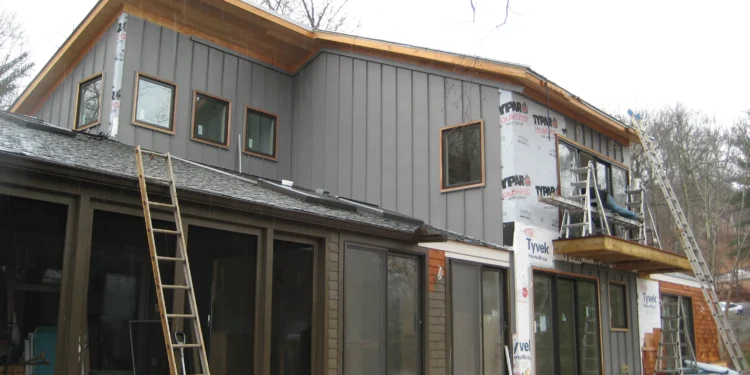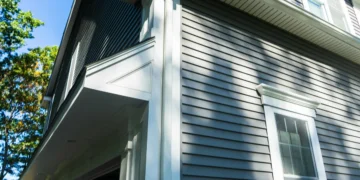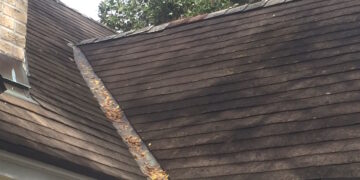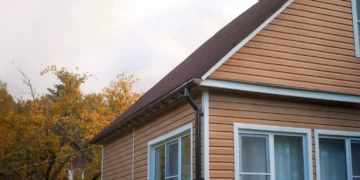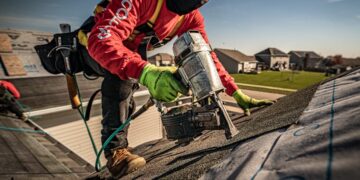Exploring the cost of installing new siding on a house delves into various factors that affect pricing. From the materials used to the labor costs involved, this topic provides valuable insights for homeowners considering a siding renovation project.
Understanding the key components that contribute to the overall cost can help individuals make informed decisions and plan effectively for their home improvement needs.
Factors Affecting the Cost of New Siding Installation
When it comes to the cost of installing new siding on a house, several factors come into play that can influence the overall expenses. Let's delve into some of the key considerations that impact the cost of siding installation.
Types of Siding Materials
- Vinyl Siding: Vinyl is a popular and cost-effective option that comes in a variety of colors and styles.
- Fiber Cement Siding: Known for its durability and low maintenance, fiber cement siding can be more expensive but offers long-lasting benefits.
- Wood Siding: Wood siding provides a classic look but requires more maintenance and can be pricier compared to other materials.
- Metal Siding: Metal siding is durable and offers a modern aesthetic, but it can be more costly upfront.
Size of the House
The size of the house is a significant factor in determining the cost of siding installation. Larger homes will require more materials and labor, resulting in higher expenses compared to smaller residences.
Complexity of the Project
Projects with intricate designs, multiple stories, or unique architectural features may require additional time and expertise, leading to increased costs for installation.
Location and Accessibility
The location of the house and its accessibility can also impact the cost of siding installation. Homes in remote areas or with challenging terrain may require extra effort and resources, potentially raising the overall expenses.
Estimating Costs for Siding Installation
When it comes to estimating the costs for siding installation, several factors come into play. This includes the type of siding material, labor costs, additional expenses, and getting accurate estimates from contractors.
Cost Ranges for Different Siding Materials
- Vinyl Siding: $3 - $7 per square foot
- Fiber Cement Siding: $5 - $12 per square foot
- Wood Siding: $7 - $15 per square foot
- Metal Siding: $6 - $12 per square foot
- Brick Siding: $8 - $15 per square foot
Labor Costs
On average, labor costs can range from $40 to $50 per hour for siding installation. The total labor cost will depend on the size of the project and the complexity of the installation process.
Additional Costs
- Permits:Depending on your location, you may need permits for siding installation, which can cost around $100 - $300.
- Disposal of Old Siding:Disposing of the old siding can cost between $1,000 - $2,500, depending on the amount of waste.
- Cleanup:Some contractors include cleanup in their services, while others may charge an additional fee of $200 - $500 for cleanup.
Tips for Getting Accurate Estimates
- Get multiple quotes from different contractors to compare prices and services offered.
- Be clear about your expectations and ask for a detailed breakdown of the costs involved.
- Avoid making decisions based solely on the lowest price, as quality of work should also be considered.
- Check for any hidden fees or additional charges that may not be included in the initial estimate.
DIY vs. Professional Siding Installation
When it comes to installing new siding on your house, one of the key decisions you'll need to make is whether to tackle the project yourself or hire professionals. Both options have their own set of costs, risks, and benefits that you should consider before making a decision.While DIY siding installation may seem like a cost-effective option, it's essential to understand the skill level required for the job.
Siding installation demands precision and attention to detail, so if you're not experienced in this type of work, you may end up with costly mistakes that could outweigh any initial savings.On the other hand, hiring professional siding installers can ensure a higher quality finish and save you time and effort.
Professionals have the expertise and tools necessary to complete the job efficiently and effectively
. However, this convenience comes at a price, as professional installation can be significantly more expensive than a DIY approach.
Cost Comparison: DIY vs. Professional
- DIY: The cost of DIY siding installation is primarily the cost of materials, which can vary depending on the type of siding you choose. However, keep in mind that mistakes or re-dos can add to the overall cost.
- Professional: Hiring professionals for siding installation includes labor costs, overhead expenses, and potentially higher-quality materials. The total cost can be significantly higher but ensures a professional finish.
Risk and Benefits
- DIY: Benefits include potential cost savings and a sense of accomplishment. Risks involve the potential for mistakes, rework, and a lower-quality finish.
- Professional: Benefits include expertise, efficiency, and a high-quality finish. Risks involve higher costs and lack of control over the installation process.
Skill Level Required for DIY
Installing siding requires a moderate to advanced level of skill, including knowledge of tools, materials, and construction techniques. If you're not confident in your abilities or experience, it's best to leave this job to professionals to avoid costly errors.
Factors to Consider
- Time and Effort: DIY installation can be time-consuming and labor-intensive, while professional installation is quicker and less physically demanding.
- Budget: Consider your budget constraints and weigh the costs of DIY versus professional installation to determine the most cost-effective option.
- Quality: Professional installers can provide a higher quality finish and ensure proper installation, while DIY projects may lack the same level of precision.
Financing Options for Siding Installation
When it comes to financing your siding installation project, there are several options available to homeowners. Understanding the pros and cons of each can help you make an informed decision that suits your budget and financial goals.
Loans
- Home Improvement Loans: Specifically designed for renovation projects, these loans offer fixed interest rates and predictable monthly payments.
- Personal Loans: Provide flexibility in terms of loan amount and repayment period, but interest rates may be higher compared to home improvement loans.
Credit Cards
- Convenience: Using a credit card for siding installation allows for immediate access to funds without the need for a loan application process.
- High Interest Rates: Credit cards often come with high-interest rates, which can increase the overall cost of the project if not paid off quickly.
Home Equity
- Lower Interest Rates: Utilizing your home equity through a home equity loan or line of credit can offer lower interest rates compared to other financing options.
- Risk of Foreclosure: Using your home as collateral means risking foreclosure if you default on payments, so it's essential to consider the long-term implications.
Tips for Choosing the Right Option
- Compare Interest Rates: Look for the financing option with the lowest interest rate to minimize the overall cost of the project.
- Consider Repayment Terms: Evaluate the repayment terms of each option to ensure it aligns with your financial situation and goals.
- Consult a Financial Advisor: Seeking advice from a financial professional can help you make an informed decision based on your individual circumstances.
Closure
In conclusion, the cost of installing new siding on a house is influenced by multiple factors, and careful consideration of these aspects can lead to a successful and cost-effective renovation. By weighing the options between DIY and professional installation, exploring financing choices, and understanding the nuances of the project, homeowners can embark on their siding journey with confidence.
FAQ Guide
What are the different types of siding materials?
Answer: Common siding materials include vinyl, wood, fiber cement, and metal.
How does the size of the house influence the cost of siding installation?
Answer: Larger houses typically require more materials and labor, leading to higher installation costs.
Is DIY siding installation cheaper than hiring professionals?
Answer: While DIY may save on labor costs, hiring professionals ensures quality work and may be more cost-effective in the long run.
What financing options are available for siding projects?
Answer: Financing options may include loans, credit cards, or utilizing home equity to fund the siding installation.

